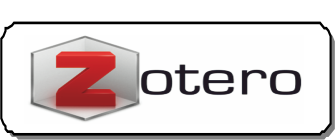Penelitian Pendahuluan Pengembangan Model Pembelajaran Berbasis Learning Management System (LMS) Pendekatan Saintifik untuk Menumbuhkan Kemandirian Belajar Mahasiswa
Abstract
Conventional learning that is too teacher-centered has an impact on the lack of development of student learning independence. This study analyzes the need for the importance of model development in learning. This type of quantitative descriptive research is in the Preliminary Study phase of the Plomp R&D model. The population is students at PTKI in East Kalimantan. Data collection through a survey of 87 respondents, interviews, and document studies which were analyzed descriptively quantitatively. The results showed that ongoing learning has not encouraged learning independence with the achievement level of respondents Strongly Agree 34.3%, Agree 31.7%, Disagree 26.3% and Disagree 7.7%, while on the aspect of using IT in learning respondents rate Strongly Agree by 35.4%, Agree 29.1%, Less Agree 27%, Disagree 8.4%. From the results of analysis and statistical tests obtained results of 0.2 > 0.05 (data normally distributed), linearity test results of 0.177 > 0.05, t test results 0.00 <0.05, validity test results on variables x,y > 0.2108, and reliability tests of 0.626> 0.600. It can be concluded that the development of an LMS-based learning model with a scientific approach to increase student learning independence is necessary and feasible to develop.
References
Arianatasari, Ajeng, Dr Luqman Hakim, S Pd, and M Sa. “Penerapan Desain Model Plomp Pada Pengembangan Buku Teks Berbasis Guided Inquiry” (n.d.): 5.
Asyhari, Ardian. “Profil Peningkatan Kemampuan Literasi Sains Siswa Melalui Pembelajaran Saintifik.” Jurnal Ilmiah Pendidikan Fisika Al-Biruni 4, no. 2 (October 27, 2015): 179–191.
Azmi, Rahmi Anita, Kasman Rukun, and Hasan Maksum. “Analisis Kebutuhan Pengembangan Media Pembelajaran Berbasis Web Mata Pelajaran Administrasi Infrastruktur Jaringan” 4 (2020).
Daud, Adi Putra M. “Implementasi Pendekatan Ilmiah (Scientific Approach) Dalam Meningkatkan Kemampuan Kolaborasi Dan Hasil Belajar Siswa Di Smk Negeri 5 Surabaya” 05 (2016): 7.
Diktis, Kemenag. Standar Kompetensi Lulusan (SKL) Dan Capaian Pembelajaran Lulusan (CPL) Program Studi Jenjang Sarjana Pada Perguruan Tinggi Keagamaan Islam Dan Fakultas Agama Islam (FAI) Pada Perguruan Tinggi, 2018.
F. Avvisati, A. Echazarra, P. Givord and, and M. Schwabe. Programme for International Student Assesment (PISA) Result from PISA 2018, 2018. Accessed October 5, 2022. https://www.oecd.org/pisa/publications/PISA2018_CN_IDN.pdf.
Fitriani, Yuni, Roida Pakpahan, Bambang Junadi, and Handini Widyastuti. “Analisa Penerapan Literasi Digital Dalam Aktivitas Pembelajaran Daring Mahasiswa” 6 (2022): 10.
Garrison, Randy. Thinking Collaboratively Learning in a Community Inquiry. Rotledge, 2015.
Goodyear, Peter, Lucila Carvalho, and Pippa Yeoman. “Activity-Centred Analysis and Design (ACAD): Core Purposes, Distinctive Qualities and Current Developments.” Educational Technology Research and Development 69, no. 2 (April 2021): 445–464.
Hadi, Fida Rahmantika, and Vivi Rulviana. “Analisis Proses Pembelajaran E-Learning Berbasis Edmodo pada Mata Kuliah Geometri.” Jurnal Bidang Pendidikan Dasar 2, no. 1 (January 25, 2018): 63.
Hiram Levy, Drew Shindell, Alice Gilliland, Larry W. Horowitz, and M. Daniel Schwarzkop. Climate Projections Based on Emissions Scenarios for Long-Lived and Short-Lived Radiatively Active Gases and Aerosols. Washinton: U.S. Climate Change Science Program, 2008.
Marwiyati, Sri, and Istiningsih Istiningsih. “Pembelajaran Saintifik pada Anak Usia Dini dalam Pengembangan Kreativitas di Taman Kanak-Kanak.” Jurnal Obsesi : Jurnal Pendidikan Anak Usia Dini 5, no. 1 (May 13, 2020): 135.
Nur Hakim, Muhammad, and Fitriyani Dwi Rahayu. “Pembelajaran Saintifik Berbasis Pengembangan Karakter.” Nazhruna: Jurnal Pendidikan Islam 2, no. 1 (February 24, 2019): 1–27.
Nurlaelah, Ilah, Ari Widodo, Sri Redjeki, and Taufik Rahman. “Analisis Kemampuan Komunikasi Ilmiah Peserta Didik Pada Kegiatan Kelompok Ilmiah Remaja Berbasis Riset Terintegrasi Keterampilan Proses Sains.” Quagga: Jurnal Pendidikan dan Biologi 12, no. 2 (July 1, 2020): 194.
Piirto, Jane. Creativity for 21st Century Skills: How to Embed Creativity into the Curriculum. Rotterdam: Sense Publ, 2011.
Redhana, I Wayan. “Mengembangkan Keterampilan Abad Ke-21 Dalam Pembelajaran Kimia” 13, no. 1 (2019): 15.
Riyadi, Rahmat Agus, Mohamad Nur, and Euis Ismayati. “Pengembangan Perangkat Pembelajaran Berbasis E-Learning Moodle Dengan Model Pengajaran Langsung Di SMKN 2 Tarakan.” Jurnal Pendidikan Vokasi (n.d.).
Susanto, Ratnawati, and Harlinda Syofyan. “Pemberdayaan Keterampilan Model Komunikasi Instruksional Guru SD.” International Journal of Community Service Learning 5, no. 1 (n.d.).
Susilo, Agus. “Pengembangan Modul Berbasis Pembelajaran Saintifik Untuk Peningkatan Kemampuan Mencipta Siswa Dalam Proses Pembelajaran Akuntansi Siswa Kelas Xii Sma N I Slogohimo 2014” 26 (2016): 7.
Suyuti Pulungan. Sejarah Peradaban Islam. Jakarta: Sinar Grafika Offset, 2017.
Thalhah, Sitti Zuhaerah, Tasdin Tahrim, and Reski Elvira Sari. “Development of Lecturer Performance Assessment Instruments through the Plomp Model in Higher Education.” AL-ISHLAH: Jurnal Pendidikan 14, no. 2 (May 20, 2022): 1527–1540.
Tongco, Ma. Dolores C. “Purposive Sampling as a Tool for Informant Selection.” Ethnobotany Research and Applications 5 (December 31, 2007): 147.
Wahyono, Ishak Abdulhak, and Rusman. “Implementation of Scientific Approach Based Learning To Think High Levels In State Senior High School In Ketapang” 5, no. 8 (n.d.).
Wirabumi, Ridwan. “Metode Pembelajaran Ceramah.” Annual Conference on Islamic Education and Thought (2020): 9.
“Curriculum Overview | Building Student Success - B.C. Curriculum.” Accessed September 4, 2022. https://curriculum.gov.bc.ca/curriculum/overview#21-century.
“Global Knowledge Index 2020 | United Nations Development Programme.” UNDP. Accessed October 21, 2022. https://www.undp.org/publications/global-knowledge-index-2020.






